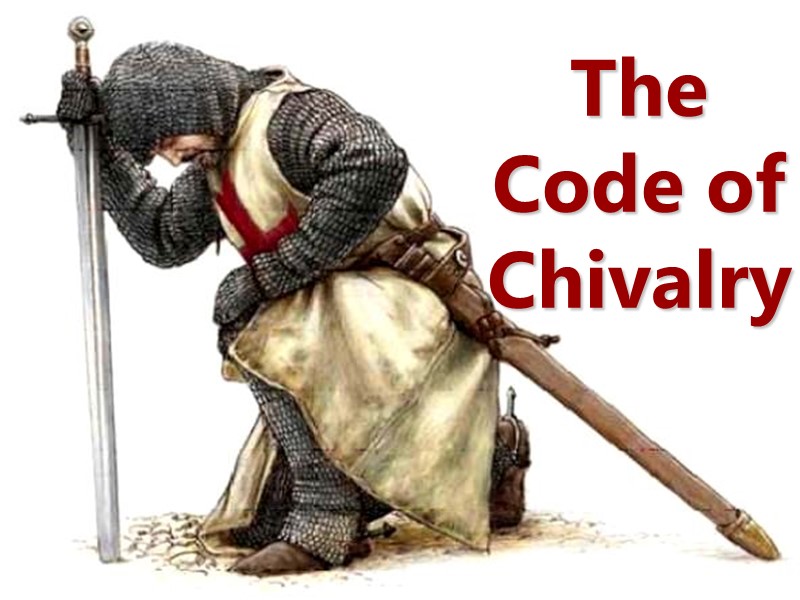
Cookie information is stored in your browser and performs functions such as recognizing you when you return to our website and helping us understand which sections of the website you find most interesting and useful. This website uses cookies so that we can provide you with the best user experience possible. We are not responsible for republished content from this blog on other blogs or websites without our permission. You can turn off the use of cookies at any time by changing your specific browser settings. This website does not share personal information with third-parties nor do we store any information about your visit to this blog other than to analyze and optimize your content and reading experience through the use of cookies.
HISTORY OF CHIVALRY CODE HOW TO
Besides displays of strength, skill and piety, knights were expected to behave in a dignified manner at court-to know dining etiquette and how to hold sophisticated conversation. The word courtesy comes from 12th-century French courteis, meaning a behavior marked by respect for others, and polished manners. The Faithful Knight by Thomas Jones Barker (1815 – 1882) Courtly Manners Some joined the Church as a new type of order-the Templars and Hospitallers.īut while knights believed in defending God and the Church, most had their own independent strand of piety, separate from that of the clergy.

These words were like music to knights-if they fought in the crusades, they need no longer worry about their immortal souls.

Pope Urban II Preaching the First Crusade in the Square of Clermont by Francesco Hayez, 1835 Pope Urban II pronounced that any knight fighting for the First Crusade would be exonerated from the sin of killing. In Geoffroi de Charny’s “ Book of Chivalry “, he explains the importance of Christian faith in all aspects of a Knight’s life.
HISTORY OF CHIVALRY CODE CODE
In addition to the earthly warrior ethos, spirituality in the form of Christianity was firmly entrenched in the Chivalric Code of knights. WyethĪs prisoners of war, knights were held for ransom in relative comfort-a courtesy not extended to lower castes like archers and foot soldiers, who were usually killed. Illustration from “Scottish Chiefs” by N.C. There was strong camaraderie and respect among knights, even to those of the enemy. Illustration from Boys King Arthur by NC Wyeth They swore allegiance to their lord or monarch as a vassal-to protect, honor, and serve as a fighter in exchange for land holdings.Īnd when they weren’t fighting on the battlefields, they were testing their prowess in jousting tournaments.

Fight of knights in the countryside by Eugène Delacroix, c.1824 Knights were mounted warriors, specializing in combat within a clan-like social caste. By the Late Middle Ages, the Code of Chivalry had become a moral system, combining warrior ethos, knightly piety, and courtly manners. Our story begins in the deep, dark Teutonic forests of medieval Europe, where the warrior culture of Germanic horsemen combined with Roman traditions were molded by the Church into a civilized code of conduct based on bravery, disciplined training, and service to others.

To add atmosphere to our journey into the Chivalric Code, optionally play the music. Continue dear reader as we delve a little deeper.


 0 kommentar(er)
0 kommentar(er)
